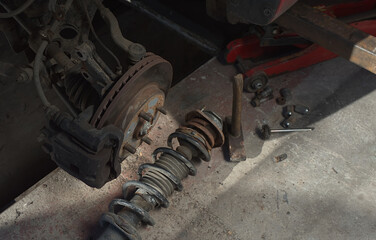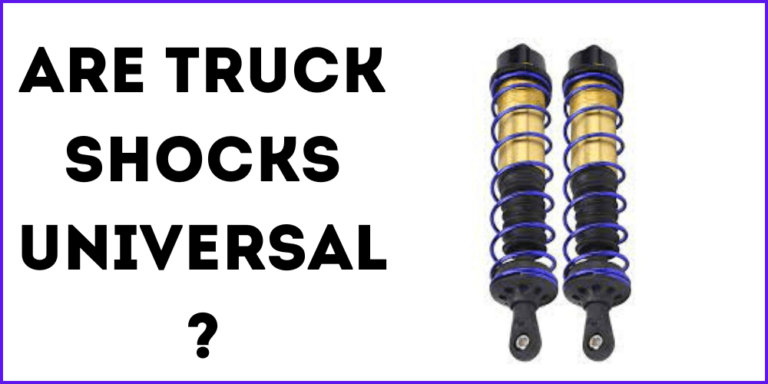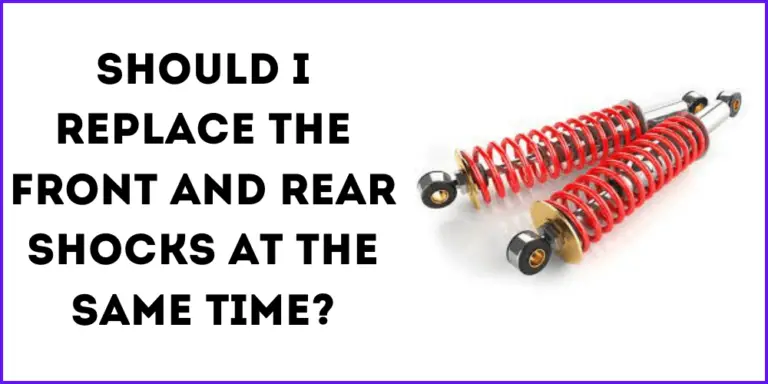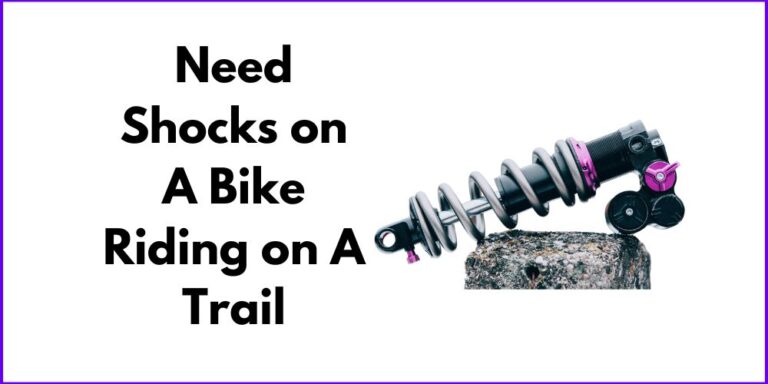Shock absorbers are an often overlooked, but crucial component of your vehicle’s suspension system. They work tirelessly to keep your ride smooth and stable, despite the constant bumps and potholes on the road. But, like all mechanical parts, they will eventually wear out and need to be replaced. The importance of maintaining your shock absorbers cannot be overstated as they play a vital role in ensuring your vehicle’s handling and safety.
In this blog post, we will delve into the causes of shock absorber wear, the signs to look out for, and the steps you can take to prolong their lifespan. Whether you’re a seasoned car enthusiast or a new driver, understanding the role of shock absorbers and how to care for them is crucial for a safe and comfortable ride.
what causes shock absorbers to wear out?

Shock absorbers are a critical component of your vehicle’s suspension system, but like all mechanical parts, they will eventually wear out. Understanding the common causes of shock absorber wear can help you take the necessary steps to prolong their lifespan. Below are some common causes of shock absorber wear out:
- Normal Wear and Tear: Just like any other mechanical part, shock absorbers will eventually wear out due to regular use. The more you drive, the more stress is put on the shock absorbers, leading to eventual wear and tear.
- Driving on Rough or Uneven Surfaces: Constant exposure to rough or uneven roads can put extra stress on the shock absorbers, causing them to wear out more quickly. This is especially true for roads with a lot of potholes or uneven surfaces.
- Carrying Heavy Loads: If you frequently carry heavy loads in your vehicle, such as equipment or cargo, the extra weight can put added stress on the shock absorbers. This can lead to accelerated wear and tear.
- Driving in Extreme Weather Conditions: Extreme temperatures and weather conditions can also take a toll on the shock absorbers. For example, driving in extremely hot or cold temperatures can cause the oil inside the shock absorbers to break down, reducing their effectiveness.
- Lack of Regular Maintenance: Shock absorbers require regular maintenance to function at their best. Neglecting regular inspections and checkups can lead to accelerated wear and tear.
- Off-roading: If you frequently take your vehicle off-road, the shock absorbers are put through a lot of stress as they have to deal with rough and uneven terrains, sudden impacts, and vibrations. This can cause them to wear out faster than normal.
- High mileage: If your vehicle has high mileage, it’s likely that the shock absorbers have been in use for a long time, which can cause them to wear out faster.
- Improper Installation: Shock absorbers need to be installed correctly to function properly. If they are not installed correctly, they may wear out faster or not function as intended. Improper installation can also cause leaks and other damage to the shock absorbers.
- Improper alignment: An improper wheel alignment can cause the shock absorbers to wear out faster. When the wheels are not aligned correctly, the shock absorbers have to work harder to keep the vehicle stable, leading to increased wear and tear.
- Age: Age is also a factor that can cause shock absorbers to wear out. Over time, the seals and bushings in the shock absorbers can deteriorate, leading to leaks and reduced effectiveness.
By understanding these common causes of shock absorbers wear out, you can take the necessary steps to prolong their lifespan and ensure a safe and comfortable ride. Regular inspections and checkups, as well as prompt replacement of worn shock absorbers, can help keep your vehicle running smoothly for years to come.
What Are the Signs of Worn Shock Absorbers?
As a vehicle owner, it’s important to be aware of the signs that your shock absorbers may be worn and in need of replacement. Here are some common indications that your shock absorbers may be past their prime:
- Reduced handling and stability: When your shock absorbers are in good condition, they help keep your vehicle stable and easy to handle on the road. If you notice that your car feels less stable and harder to control, particularly when making turns or driving on uneven surfaces, it could be a sign that your shock absorbers are worn.
- Uneven tire wear: Worn shock absorbers can also lead to uneven tire wear. This happens because worn shocks allow the wheels to move up and down more than they should, which can cause the tires to wear down on one side more than the other.
- Increased stopping distance: Your shock absorbers play a key role in your vehicle’s braking system. If they are worn, it can make it harder for your car to stop quickly and safely.
- Bouncing or swaying after hitting bumps: Another tell-tale sign of worn shock absorbers is if your car bounces excessively or sways after hitting bumps in the road. This is caused by the shocks not being able to effectively dampen the vibrations caused by the bumps, leading to a rough and uncomfortable ride.
- Leaking fluid from the shock absorber: Finally, one of the most obvious signs of worn shock absorbers is if you notice fluid leaking from them. This indicates that the seals have been damaged and the shock absorbers need to be replaced.
If you notice any of these signs, it’s important to have your shock absorbers inspected and replaced as soon as possible. Not only will this improve your vehicle’s handling and safety, but it will also prolong the life of your tires and other suspension components.
Prevention and Maintenance
Proper maintenance is key to prolonging the lifespan of your vehicle’s shock absorbers and ensuring a safe and comfortable ride. Here are some steps you can take to keep your shock absorbers in top condition:
- Regular inspections and checkups: One of the easiest ways to keep your shock absorbers in good working order is by scheduling regular inspections and checkups. During these visits, a mechanic can check for any signs of wear or damage and recommend any necessary repairs or replacements. It’s also a good idea to have your shock absorbers inspected whenever you have your tires rotated or when you’re getting your vehicle serviced.
- Replacing worn shock absorbers in a timely manner: Shock absorbers are designed to last between 50,000 and 100,000 miles, depending on the make and model of your vehicle. If you’re experiencing any of the signs of worn shock absorbers, such as reduced handling and stability, uneven tire wear, or increased stopping distance, it’s important to have them inspected and replaced as soon as possible.
- Regularly checking for leaks or damage: Another important step in maintaining your shock absorbers is to regularly check for leaks or damage. Shock absorbers that are leaking fluid or have visible damage should be replaced immediately.
- Properly maintaining the vehicle and tires: Proper maintenance of your vehicle and tires is also important for maintaining the health of your shock absorbers. Keeping your vehicle properly aligned and maintaining the correct tire pressure can help reduce the wear and tear on your shock absorbers. In addition, driving on rough or uneven surfaces, carrying heavy loads, and driving in extreme weather conditions can all put extra stress on your shock absorbers, so it’s important to avoid these conditions when possible.







